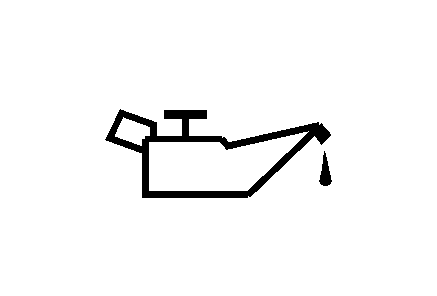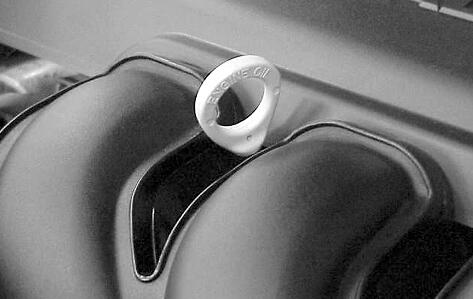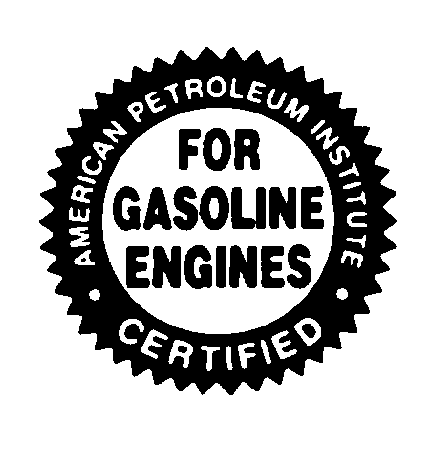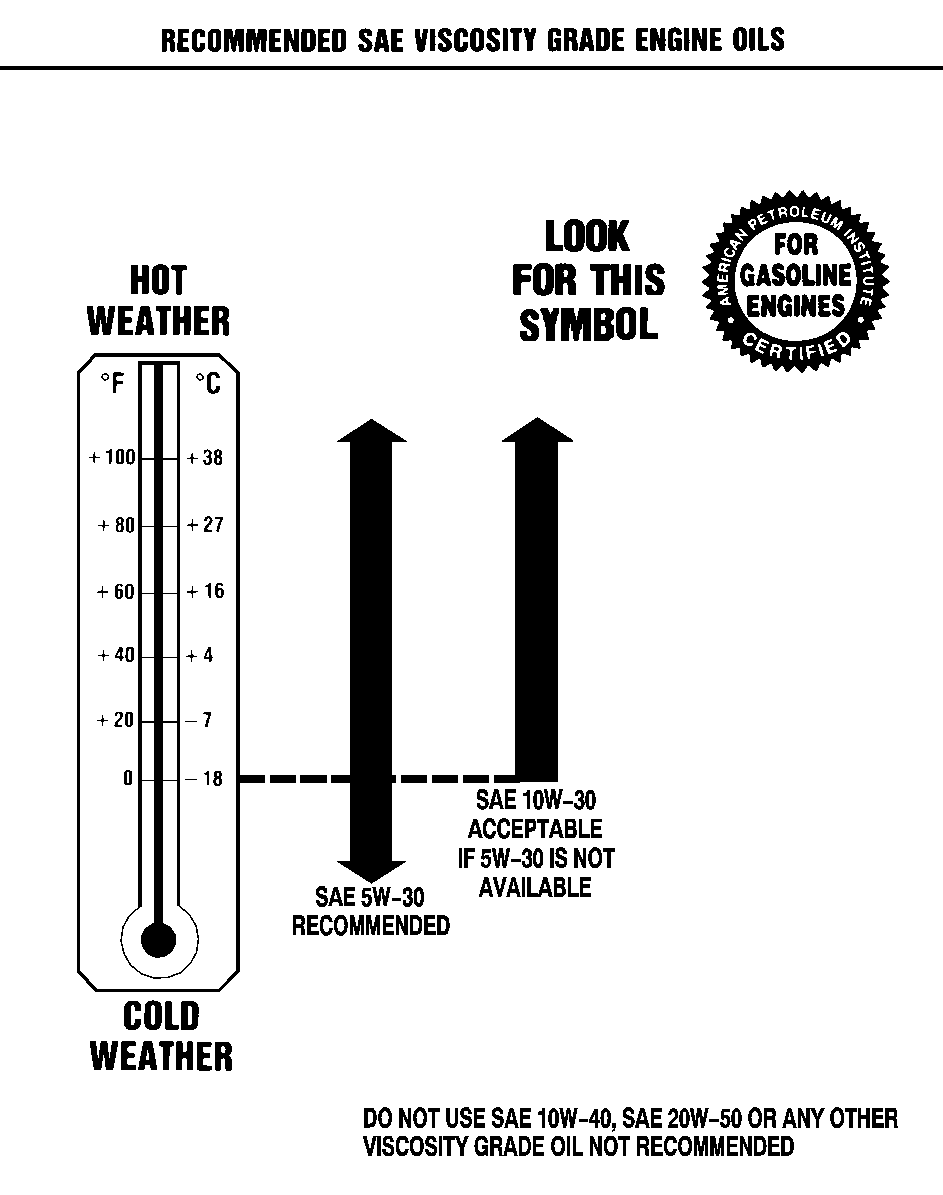
If the engine oil pressure light appears on the instrument cluster, it means you need to check your engine oil level right away.
For more information, see Oil Pressure Light .
You should check your engine oil level regularly; this is an added reminder.
Checking Engine Oil
It's a good idea to check your engine oil every time you get fuel. In order to get an accurate reading, the oil must be warm and the vehicle must be on level ground.
1.8L Code 8 engine shown, 1.8L Code L engine similar

The engine oil dipstick is located in the center of the engine compartment. The dipstick handle is a yellow loop. See Engine Compartment Overview for more information on location.
Turn off the engine and give the oil several minutes to drain back into the oil pan. If you don't, the oil dipstick might not show the actual level.
Pull out the dipstick and clean it with a paper towel or cloth, then push it back in all the way. Remove it again, keeping the tip down, and check the level.
1.8L (Code 8) Engine

1.8L (Code L) Engine

When to Add Engine Oil
If the oil is at or below the hole at the tip of the dipstick, then you'll need to add at least one quart of oil. But you must use the right kind. This part explains what kind of oil to use. For engine oil crankcase capacity, see Capacities and Specifications .
Notice: Do not add too much oil. If the engine has so much oil that the oil level gets above the upper mark that shows the proper operating range, the engine could be damaged.

The engine oil fill cap is located in the center of the engine compartment. See Engine Compartment Overview for more information on location.
Be sure to fill it enough to put the level somewhere in the proper operating range. Push the dipstick all the way back in when you're through.
What Kind of Engine Oil to Use
Oils recommended for your vehicle can be identified by looking for the starburst symbol.
This symbol indicates that the oil has been certified by the American Petroleum Institute (API). Do not use any oil which does not carry this starburst symbol.

If you choose to perform the engine oil change service yourself, be sure the oil you use has the starburst symbol on the front of the oil container. If you have your oil changed for you, be sure the oil put into your engine is American Petroleum Institute certified for gasoline engines.
You should also use the proper viscosity oil for your vehicle, as shown in the viscosity chart.

As in the chart shown previously, SAE 5W-30 is the only viscosity grade recommended for your vehicle. You should look for and use only oils which have the API Starburst symbol and which are also identified as SAE 5W-30. If you cannot find such SAE 5W-30 oils, you can use an SAE 10W-30 oil which has the API Starburst symbol, if it's going to be 0°F (-18°C) or above. Do not use other viscosity grade oils, such as SAE 10W-40 or SAE 20W-50 under any conditions.
Notice: Use only engine oil with the American Petroleum Institute Certified For Gasoline Engines starburst symbol. Failure to use the recommended oil can result in engine damage not covered by your warranty.
GM Goodwrench® oil meets all the requirements for your vehicle.
If you are in an area of extreme cold, where the temperature falls below -20°F (-29°C), it is recommend that you use either an SAE 5W-30 synthetic oil or an SAE 0W-30 oil. Both will provide easier cold starting and better protection for your engine at extremely low temperatures.
Engine Oil Additives
Don't add anything to your oil. The recommended oils with the starburst symbol are all you will need for good performance and engine protection.
When to Change Engine Oil
If any one of these is true for you, use the short trip/city maintenance schedule:
| • | Most trips are less than 5 miles (8 km). This is particularly important when outside temperatures are below freezing. |
| • | Most trips include extensive idling (such as frequent driving in stop-and-go traffic). |
| • | You frequently tow a trailer or use a carrier on top of your vehicle. |
| • | The vehicle is used for delivery service, police, taxi or other commercial application. |
Driving under these conditions causes engine oil to break down sooner. If any one of these is true for your vehicle, then you need to change your oil and filter every 3,000 miles (5 000 km) or 3 months -- whichever occurs first.
If none of them are true, use the long trip/highway maintenance schedule. Change the oil and filter every 7,500 miles (12 500 km) or 12 months -- whichever occurs first. Driving a vehicle with a fully warmed engine under highway conditions will cause engine oil to break down slower.
What to Do with Used Oil
Used engine oil contains certain elements that may be unhealthy for your skin and could even cause cancer. Don't let used oil stay on your skin for very long. Clean your skin and nails with soap and water, or a good hand cleaner. Wash or properly dispose of clothing or rags containing used engine oil. See the manufacturer's warnings about the use and disposal of oil products.
Used oil can be a threat to the environment. If you change your own oil, be sure to drain all the oil from the filter before disposal. Never dispose of oil by putting it in the trash, pouring it on the ground, into sewers, or into streams or bodies of water. Instead, recycle it by taking it to a place that collects used oil. If you have a problem properly disposing of your used oil, ask your dealer, a service station or a local recycling center for help.
